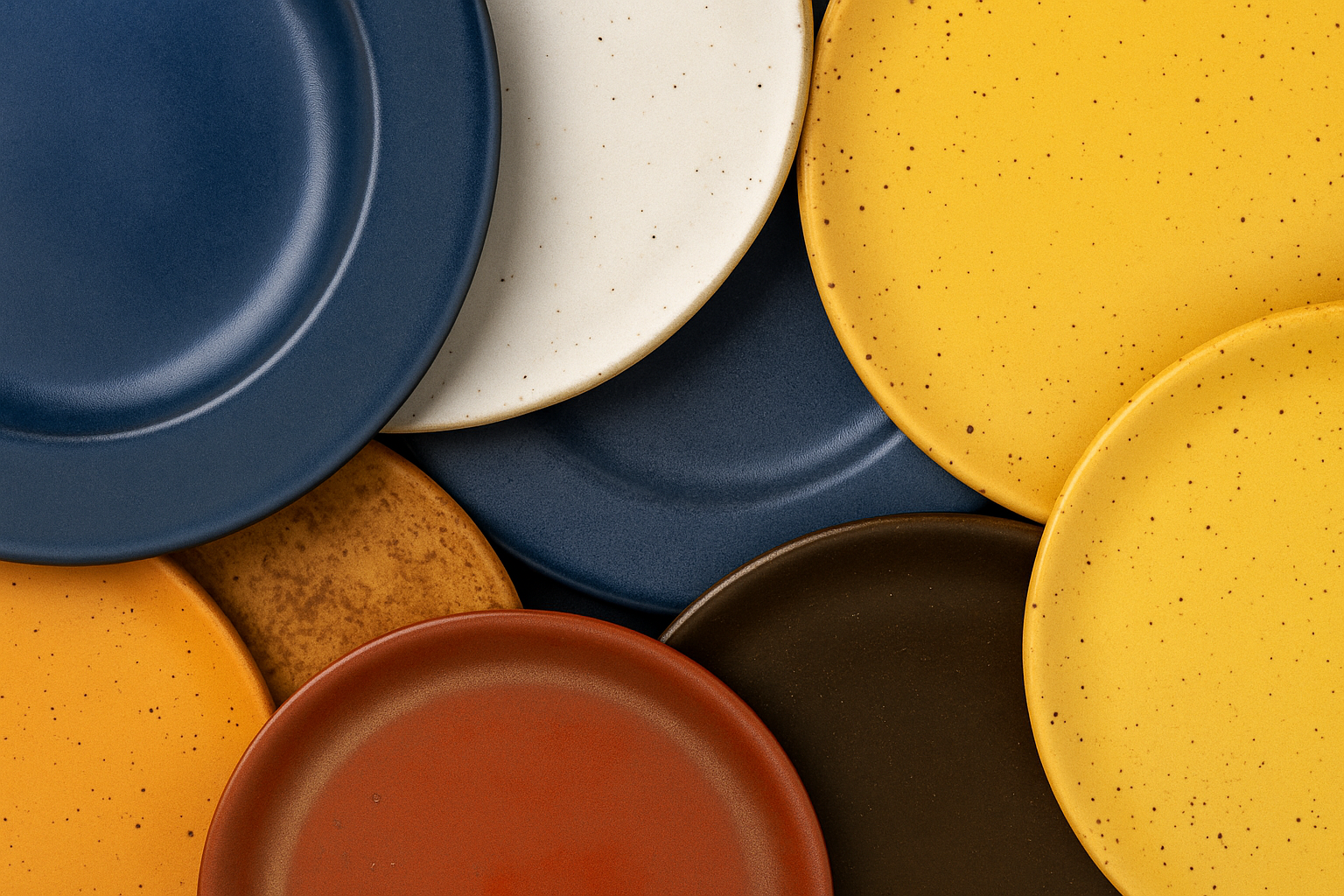
Our glazes
Provide customers with details about banner images or content on the template.
Mineral glazes
Our glazes are as unique as the pieces they complete. They are hand-mixed in the Taizé pottery workshop from natural, mineral raw materials. Completely without chemical additives, without plastic, without compromise.
Each glaze is food-safe, dishwasher-safe, and heat-resistant. Due to their mineral composition, each glaze reacts slightly differently in the kiln: sometimes with subtle color gradients, sometimes with small crystal structures or matte depths. This creates vibrant surfaces that lend character to each piece and reveal its artisanal origins.
The recipes for the mineral glazes originate from the monastery itself and are still being developed, refined and passed on today.
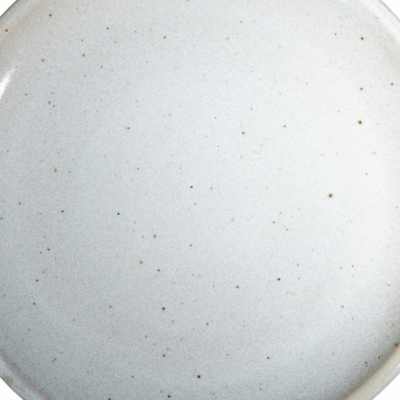
Bois de Bresse
A quiet white with history.
Inspired by the ancient shrubs of the Bresse plain, this glossy glaze bears the name of a landscape that has always been part of our environment. In the past, its delicate white color was created by the ash of local wood. Today, we draw the color from natural minerals: titanium dioxide gives it its subtle luminosity, while calcium carbonate lends the surface a gentle sheen.
Thus, the memory of an old technology lives on in a modern form – timeless, simple, and of quiet elegance.
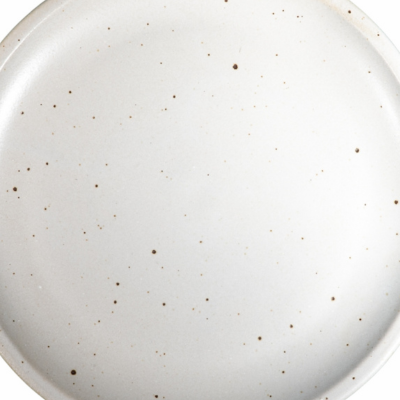
Silver Grey
A faint shimmer of smoke and stone.
This glaze carries with it the memory of craftsmanship. Originally created from the fine scraps of a local carpenter's workshop, it intertwined the wood of past work with the fire of the kiln—leaving a silver-gray hue on the clay.
Today, its delicate shine is created by a balanced combination of natural minerals: talc , calcium carbonate and phosphates give the surface its soft character – cool as stone, lively as ash, with the fine shimmer of time.
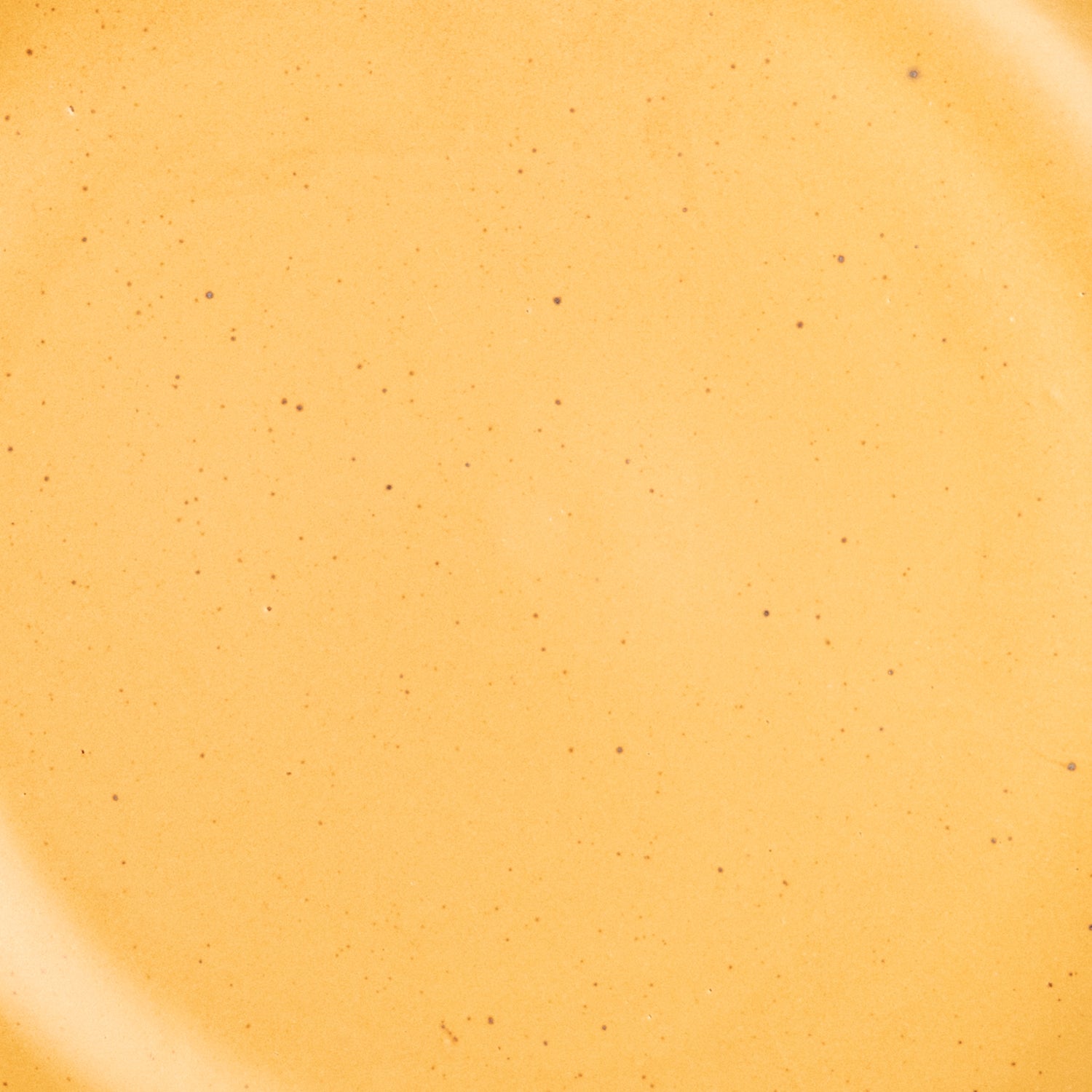
Yellow
The soft yellow of ripe wheat fields.
This glaze was already made from the rich earth and mineral treasures of our environment.
Today, titanium dioxide provides the radiant brightness, while talc and kaolin form the velvety, matte surface. The minerals combine to create a glaze reminiscent of both the sun and the earth.
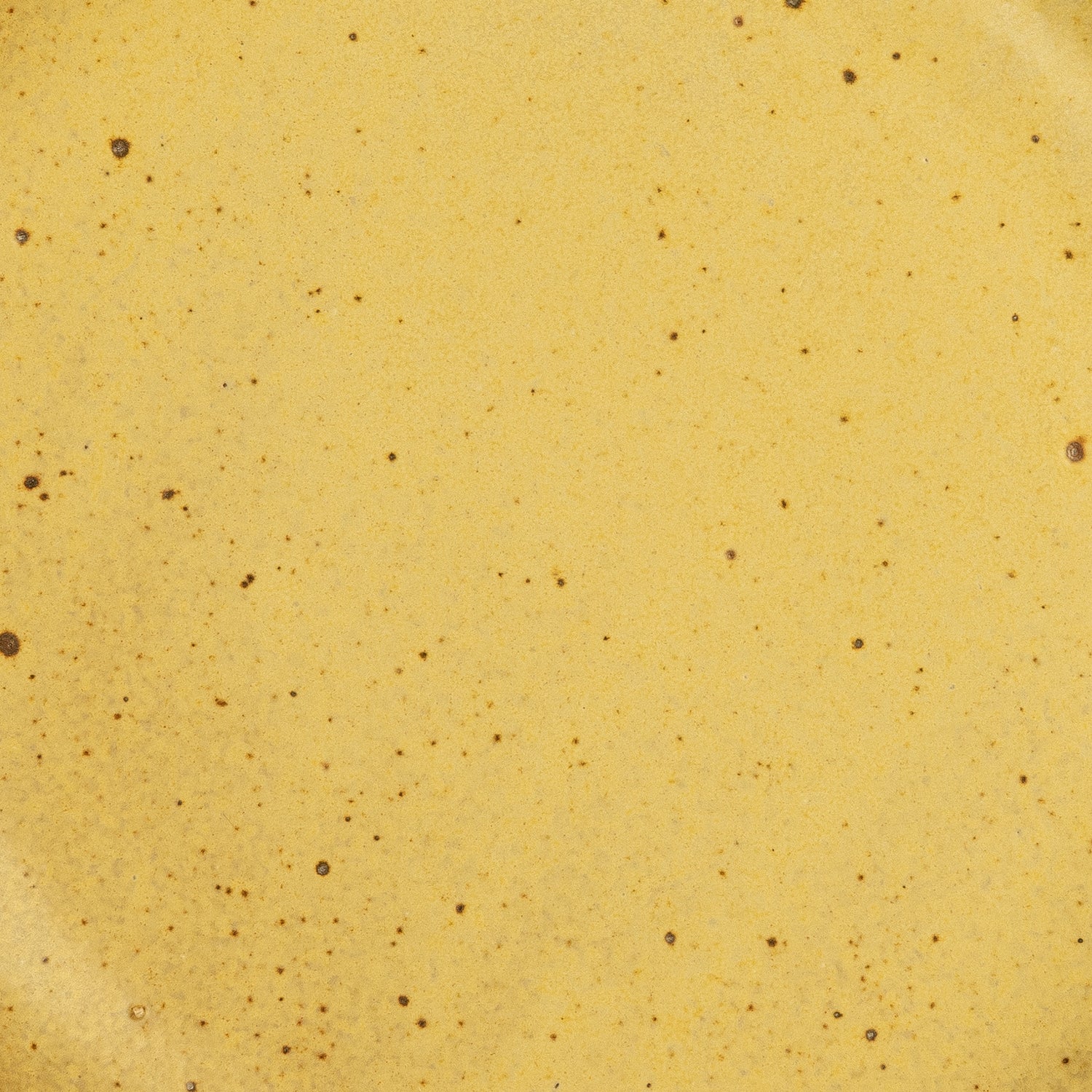
Gousseau
A touch of light captured in sound.
The forests of Gousseau, barely a breath away from our studio, were once the source of this glaze. From the ash of fallen leaves and their delicate stems, a glaze emerged that smelled of the sun: warm, quiet, and yellow like late summer light.
Today, it's a fine trace of iron oxide that carries this hue. Surrounded by talc , calcium carbonate, and phosphates, a restrained yellow gently unfolds on the surface, not expressing itself, but rather radiating light.
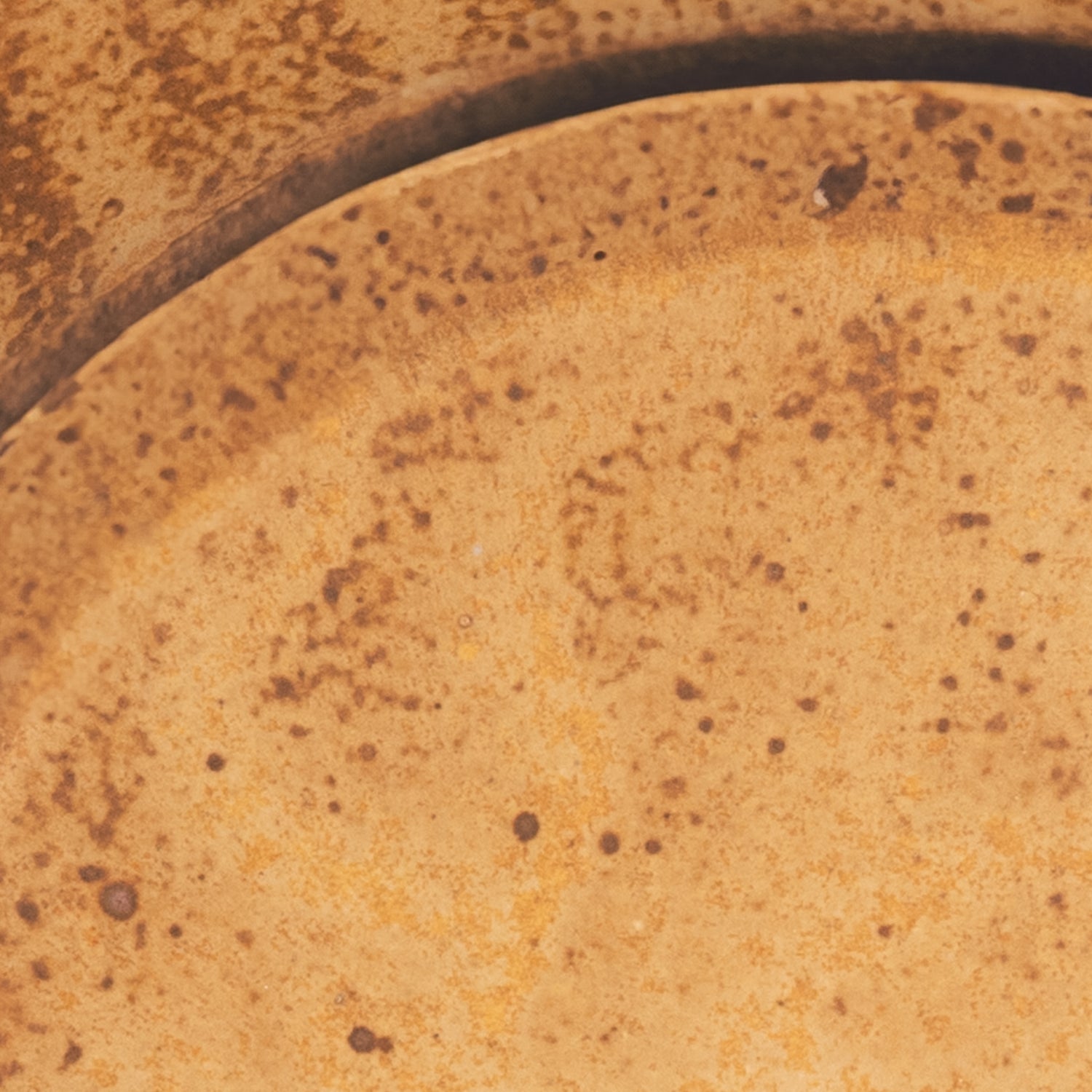
Noisette
A warm earth tone with a nutty origin.
In the past, it was the fine ash of roasted hazelnut shells that gave this glaze its unique color. The fire drew from the shell what the earth had given it, leaving a color reminiscent of forests, autumn, and nuts.
Today, a subtle hint of iron oxide brings out this depth. Talc and calcium carbonate combine to create a warm, nutty-brown tone reminiscent of roasted wood—soft, grounded, and full of inner peace.
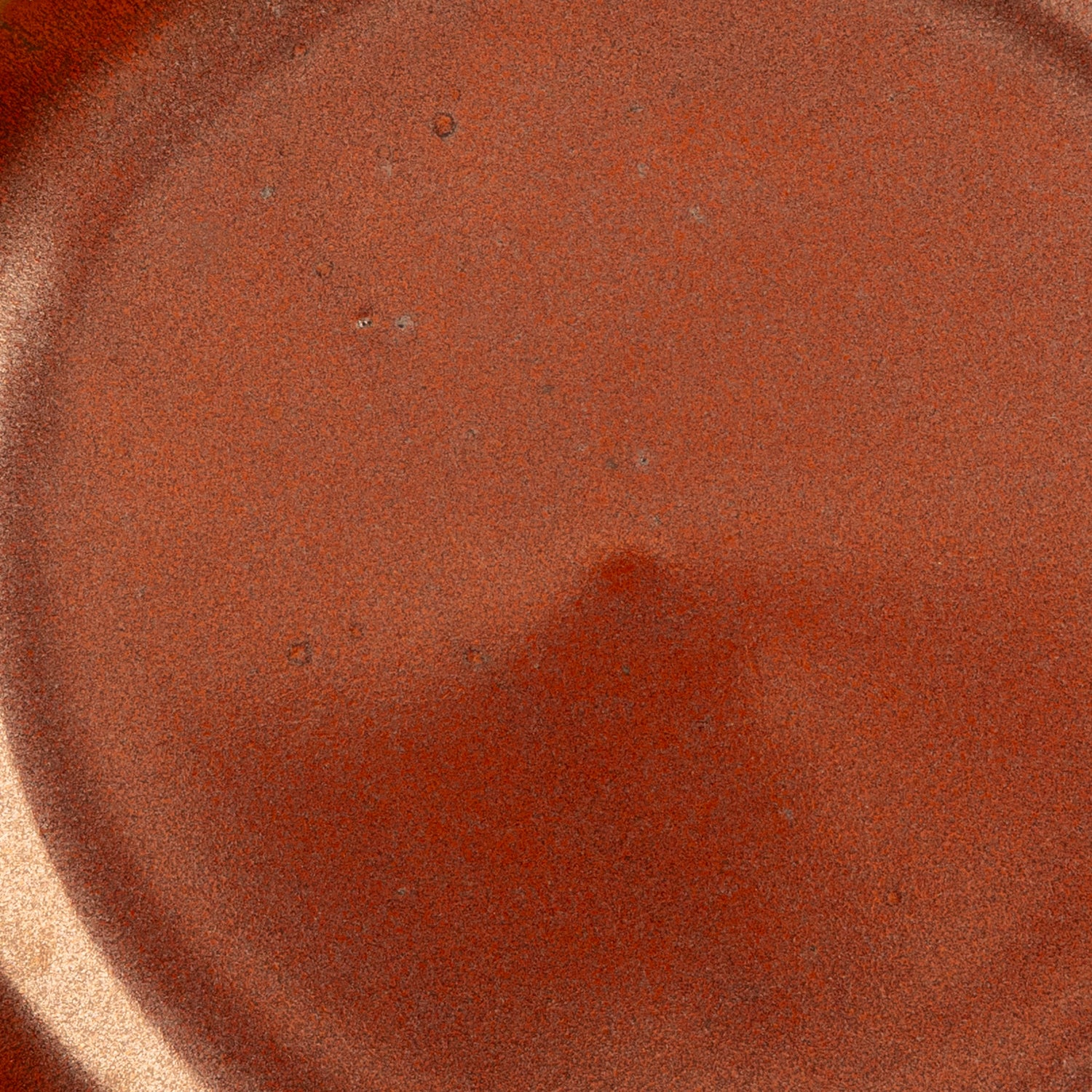
Red Persimmon
A shiny red like the combination of ore and iron.
This glaze carries the heritage of the earth within it. Formed from natural ores, it develops its characteristic color when heated to high temperatures: a rich iron red , interspersed with subtle nuances reminiscent of cracked earth and glowing rock layers.
As in the Styrian Erzberg, the metal within reveals its beauty only when fired. Oxidation creates a gentle sheen that brings the surface to life. Red Kaki is both archaic and refined. A shade as powerful as it is tranquil.
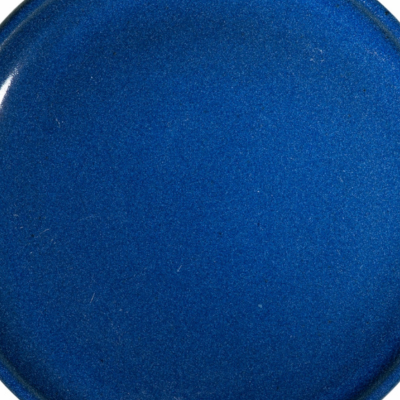
Blue
A shining blue like shadows on the water.
In earlier days, the ash for this glaze came from the forests of Bresse. Where fire struck leaves and embers consumed the wood, a fine powder was created, enriched with a hint of cobalt, which gave the blue its depth.
Today, cobalt oxide carries this color further: it permeates the glaze with a luminous darkness that shimmers in the light like still water between trees. Phosphates and calcium carbonate give it a silky surface: clear, cool, and of consistent intensity.
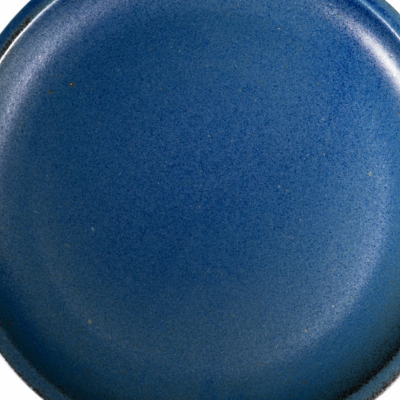
Blue mat
A matte midnight blue on clay.
Like its glossy counterpart, this glaze also stems from the memories of the Bresse forests. Once enriched with ash and cobalt, it is both deep blue and earthy.
Today, the focus is on the color itself: cobalt oxide permeates the glaze with velvety depth, yet without reflection. The light sinks into its surface, calm and unruffled – like fog over a tranquil landscape.
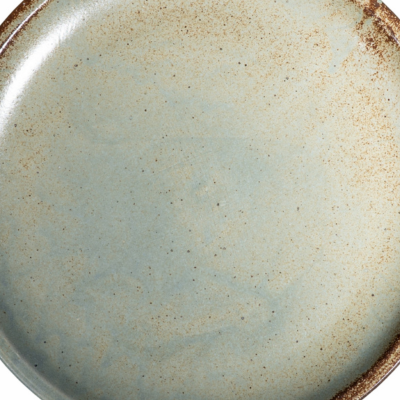
Omnia
A shimmer like moss with a hint of bronze.
This glaze is a play of depth and light: neither quite green nor quite metallic, but something in between. A carefully balanced composition of precious metal oxides gives it a shimmering bronze hue reminiscent of damp leaves, dark moss, and still water.
Its surface is vibrant. Sometimes matte, sometimes glossy, with color shifts depending on the light. Omnia is the most mysterious of glazes—like a glimpse into something ancient that continually reveals itself in new ways.
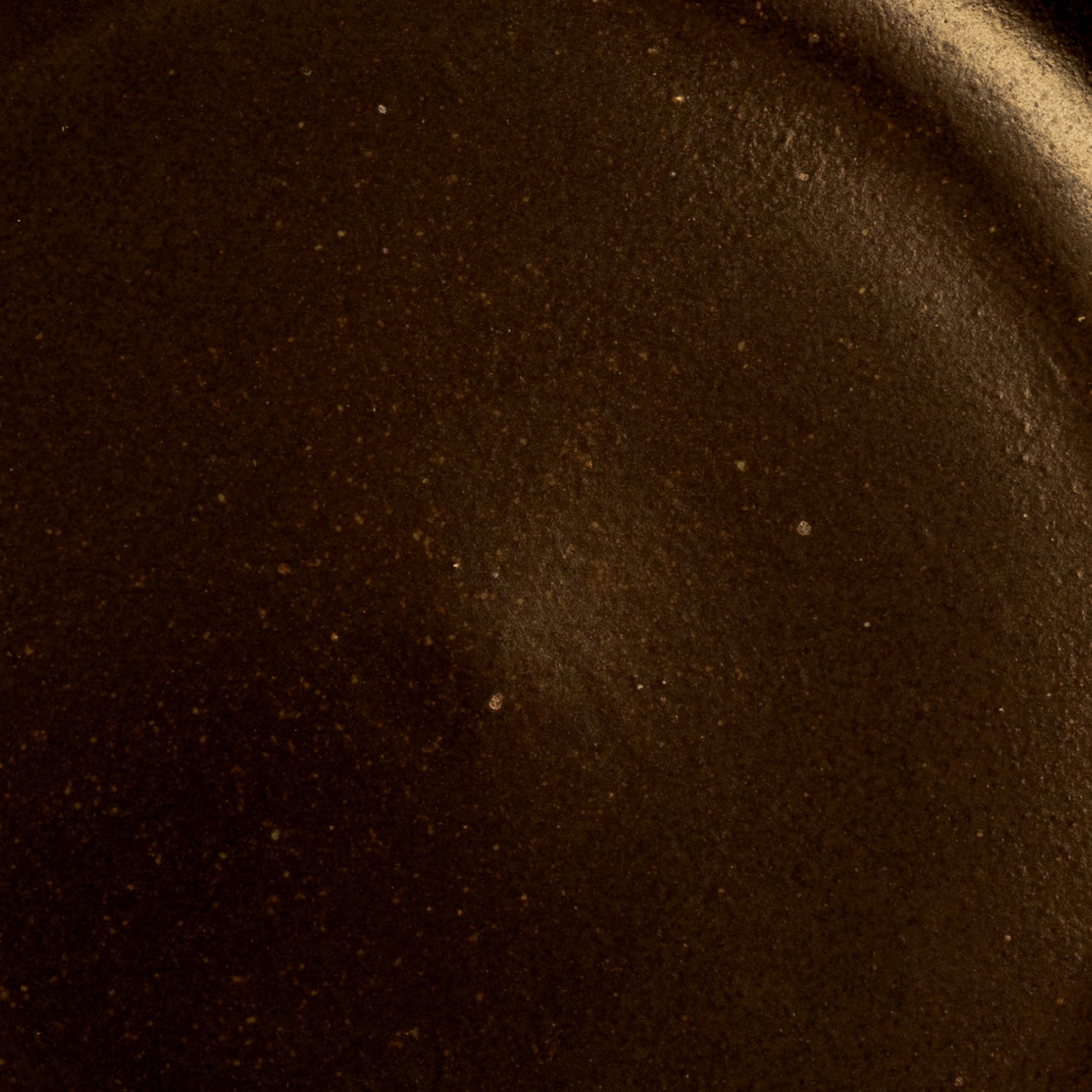
Temmoku
A dark glow with millennia-old depth.
This glaze follows an ancient tradition: its origins date back over a thousand years to Chinese ceramics tradition. Iron was, then as now, its central element. When fired, it unfolds its full power, bathing the surface in a deep, reddish-brown glow, almost black in shadow, warmly gleaming in the light.
Today, iron oxide gives the glaze its characteristic depth. The heat of the kiln oxidizes the metal, creating that shimmering iron bronze .
This is what our glazes look like on the finished plate:
La Poterie de Taizé
Dinner plates "Assiette grande" 2 pcs.
Split
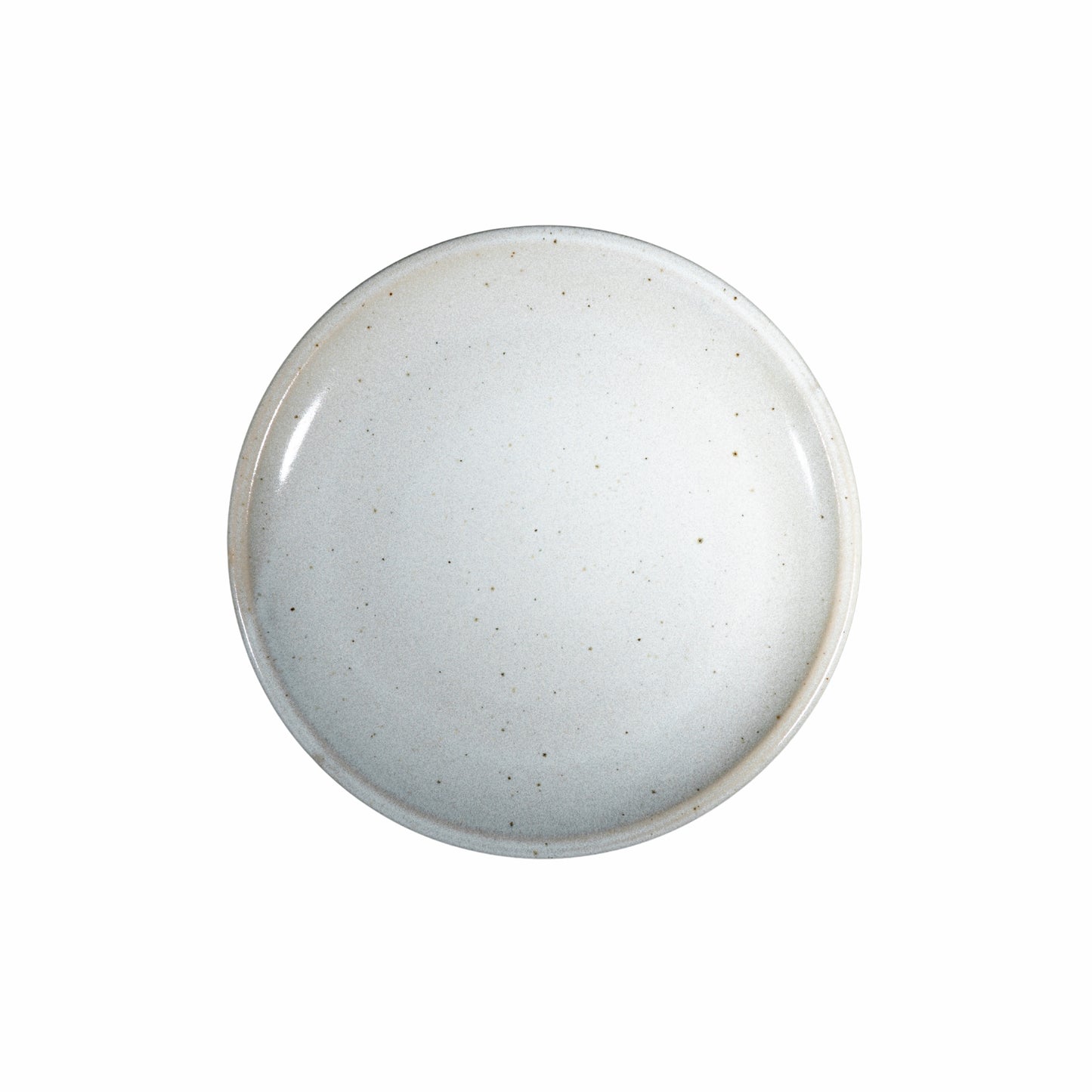
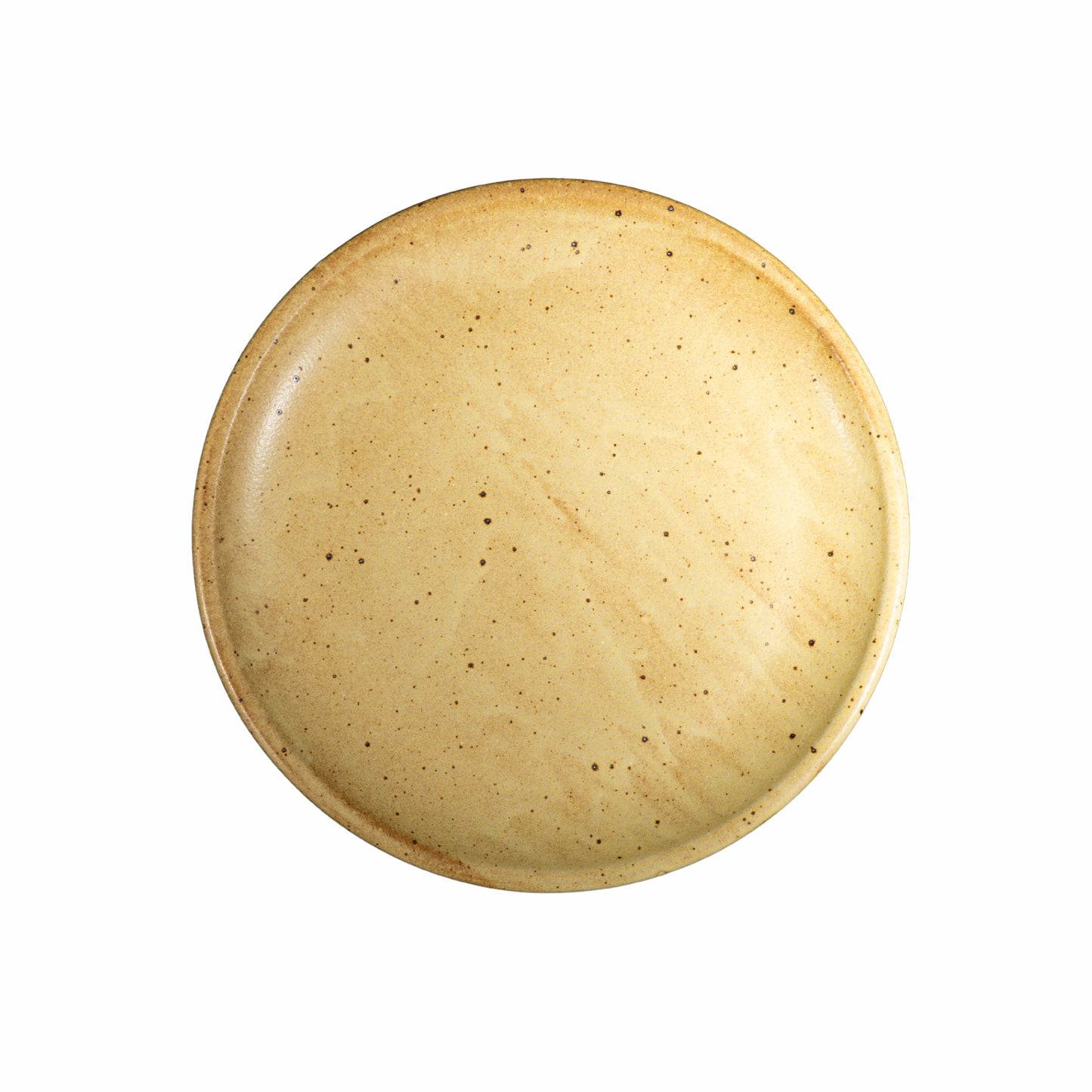
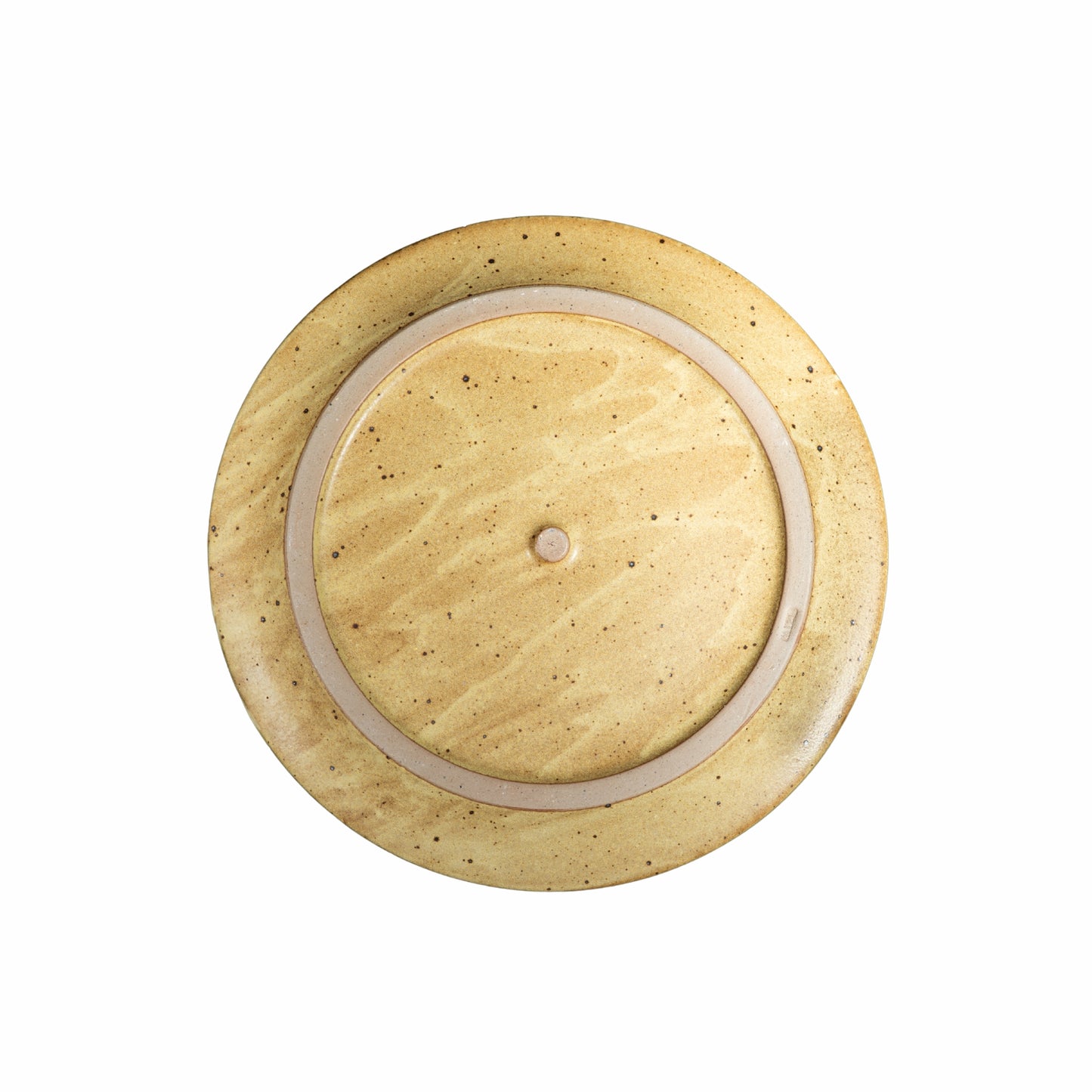
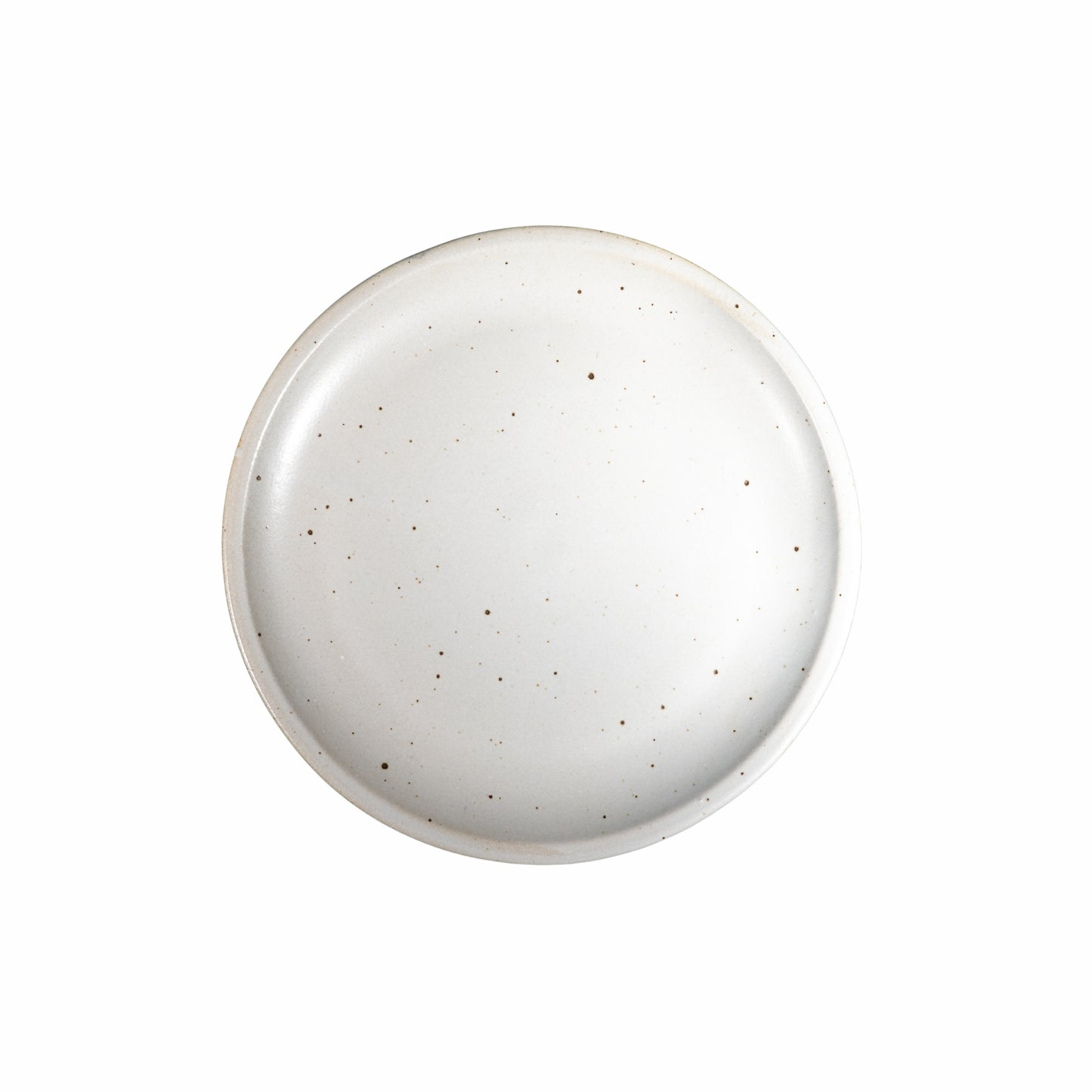
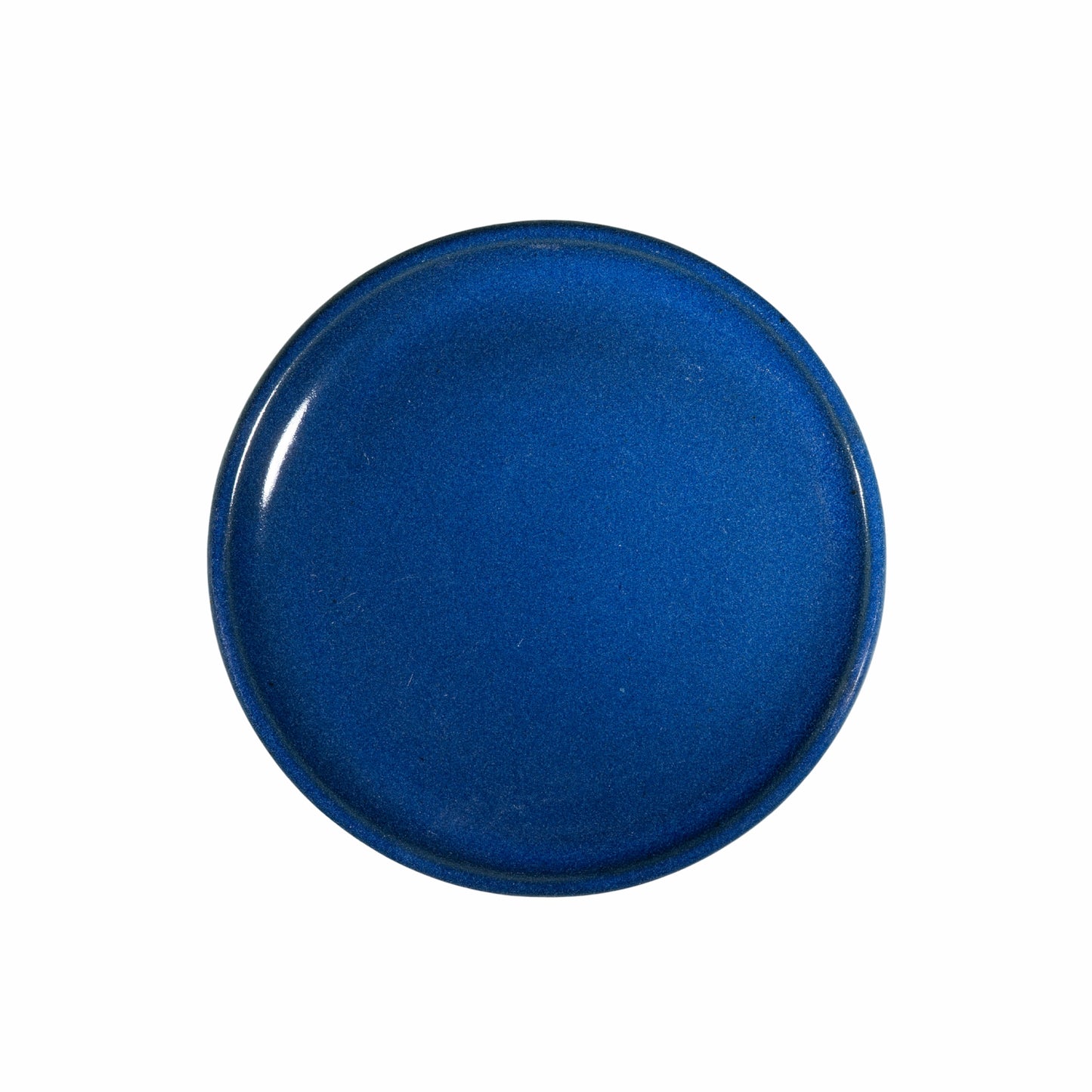
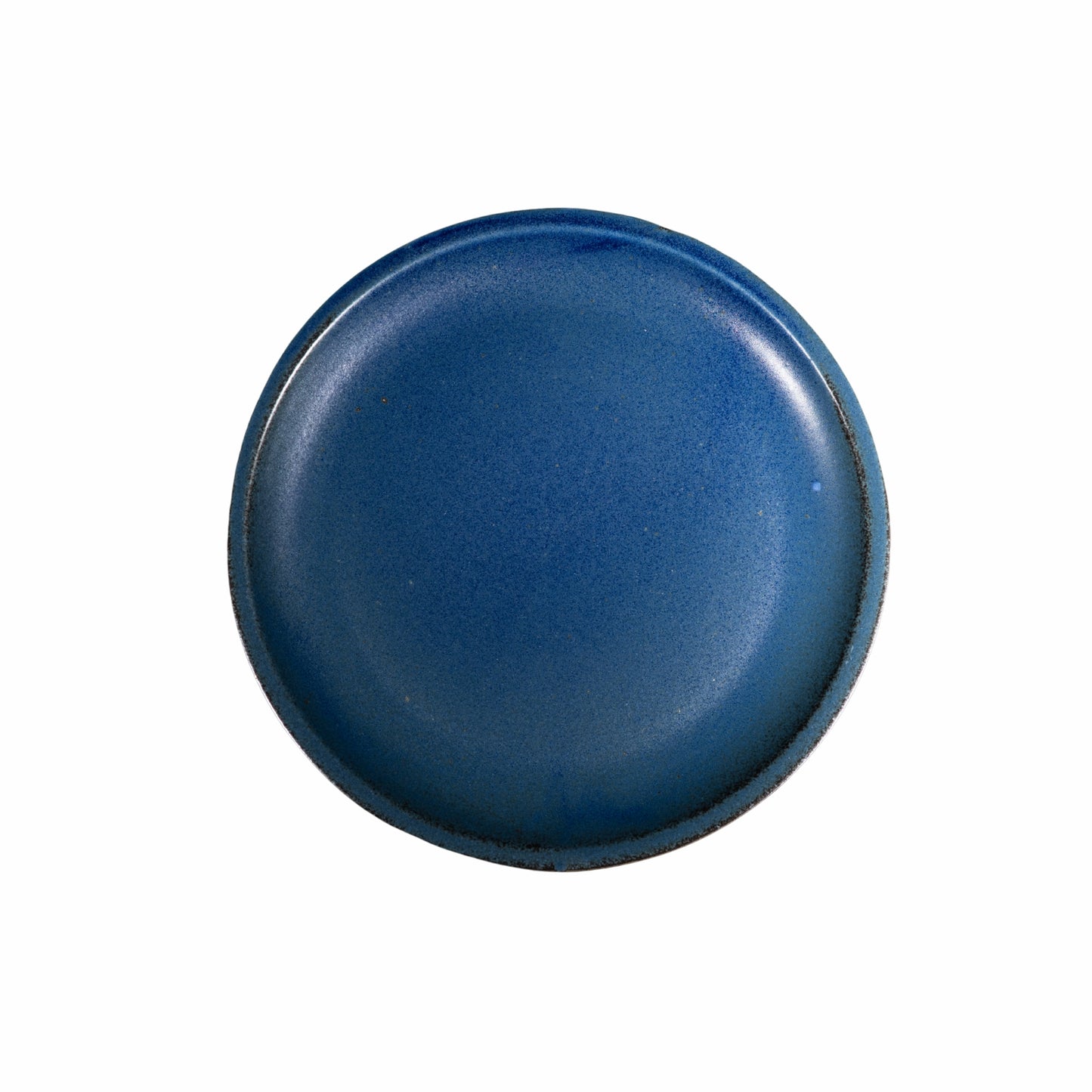
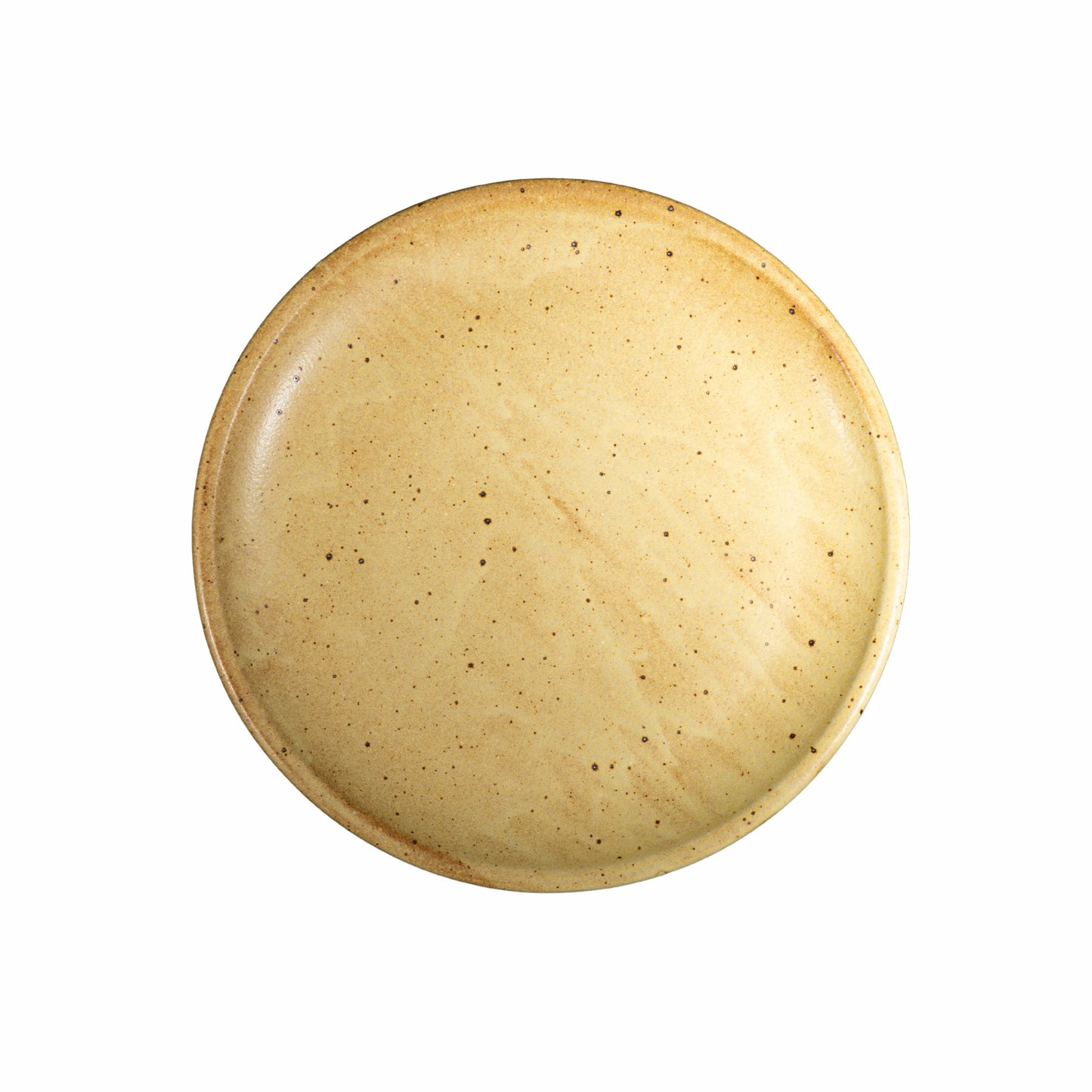
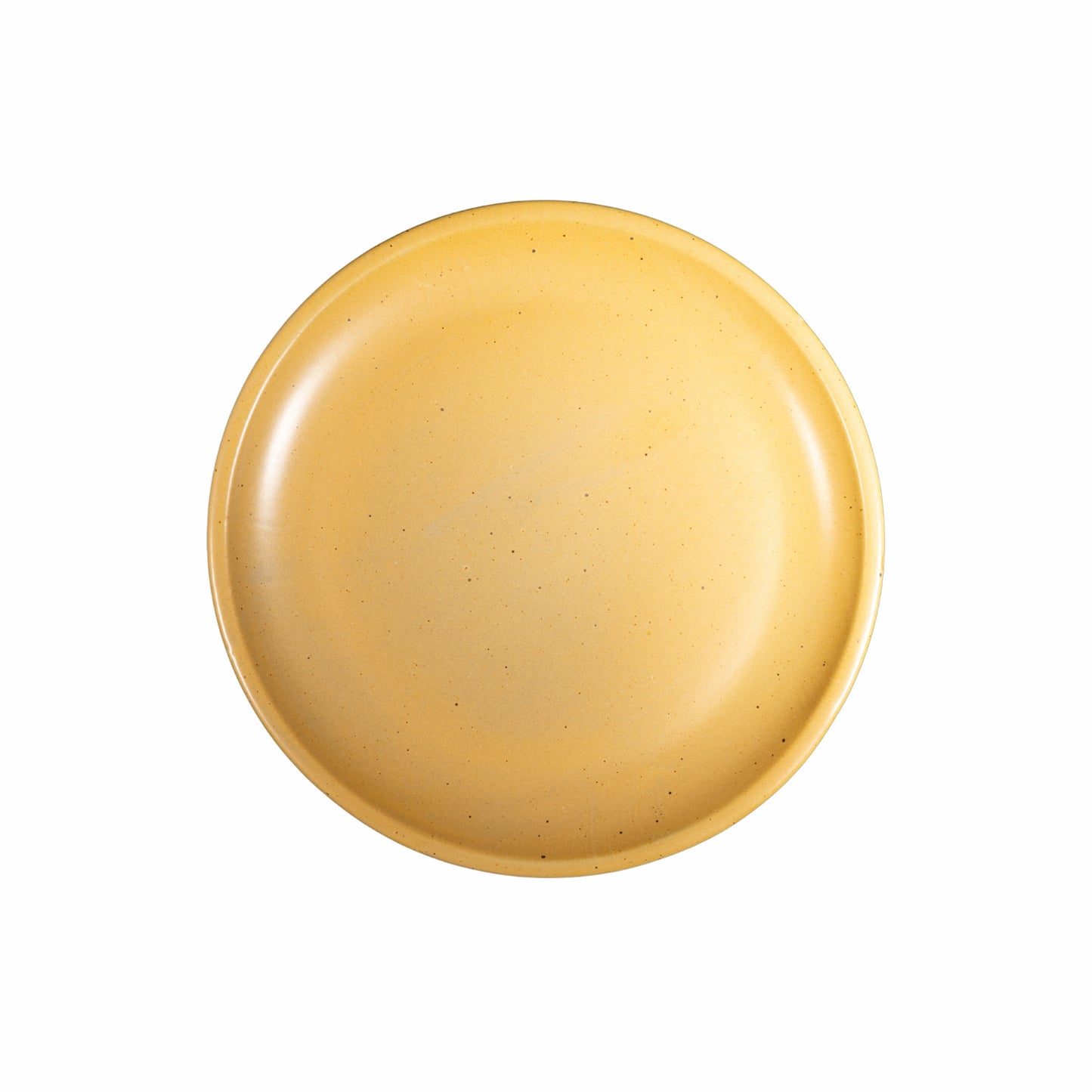
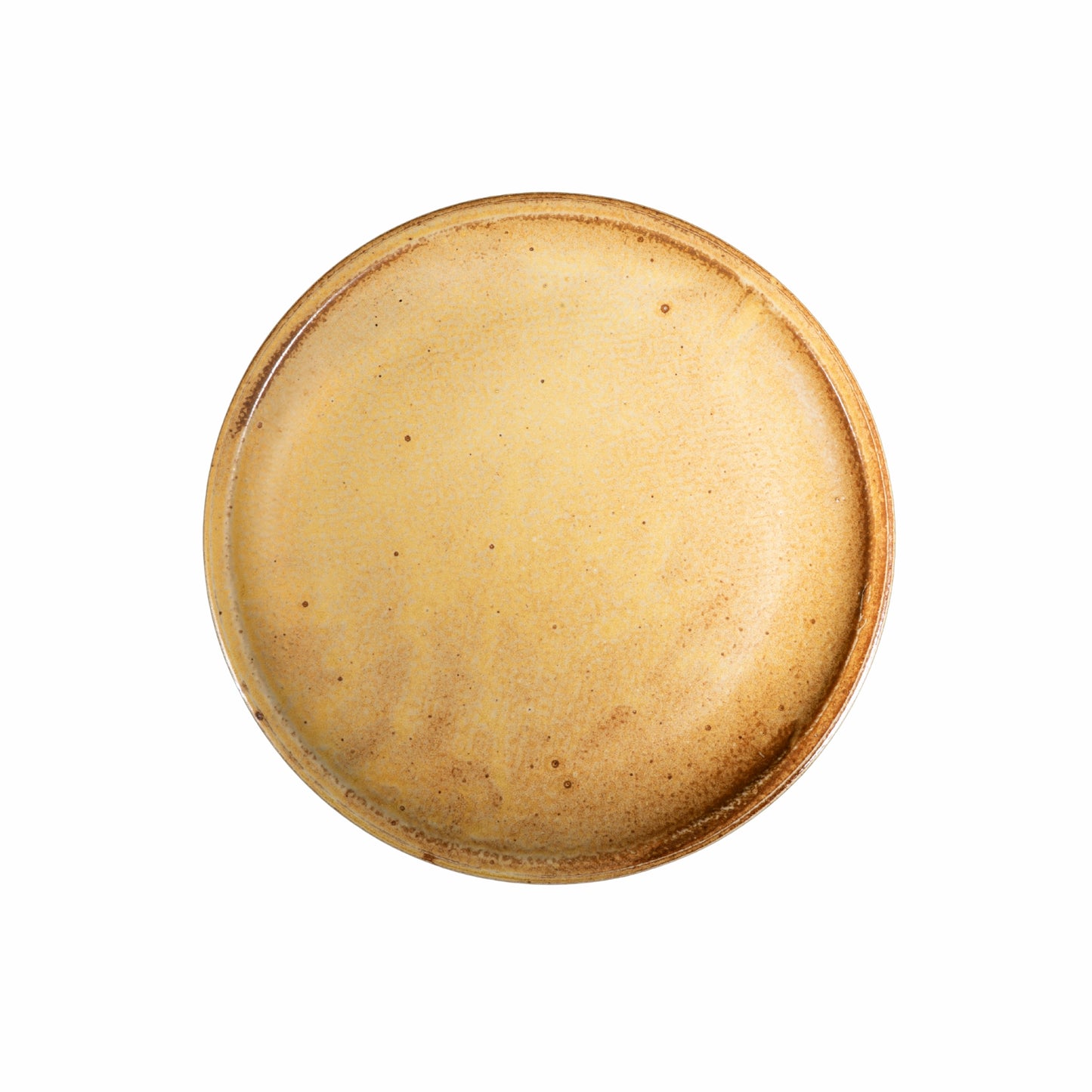
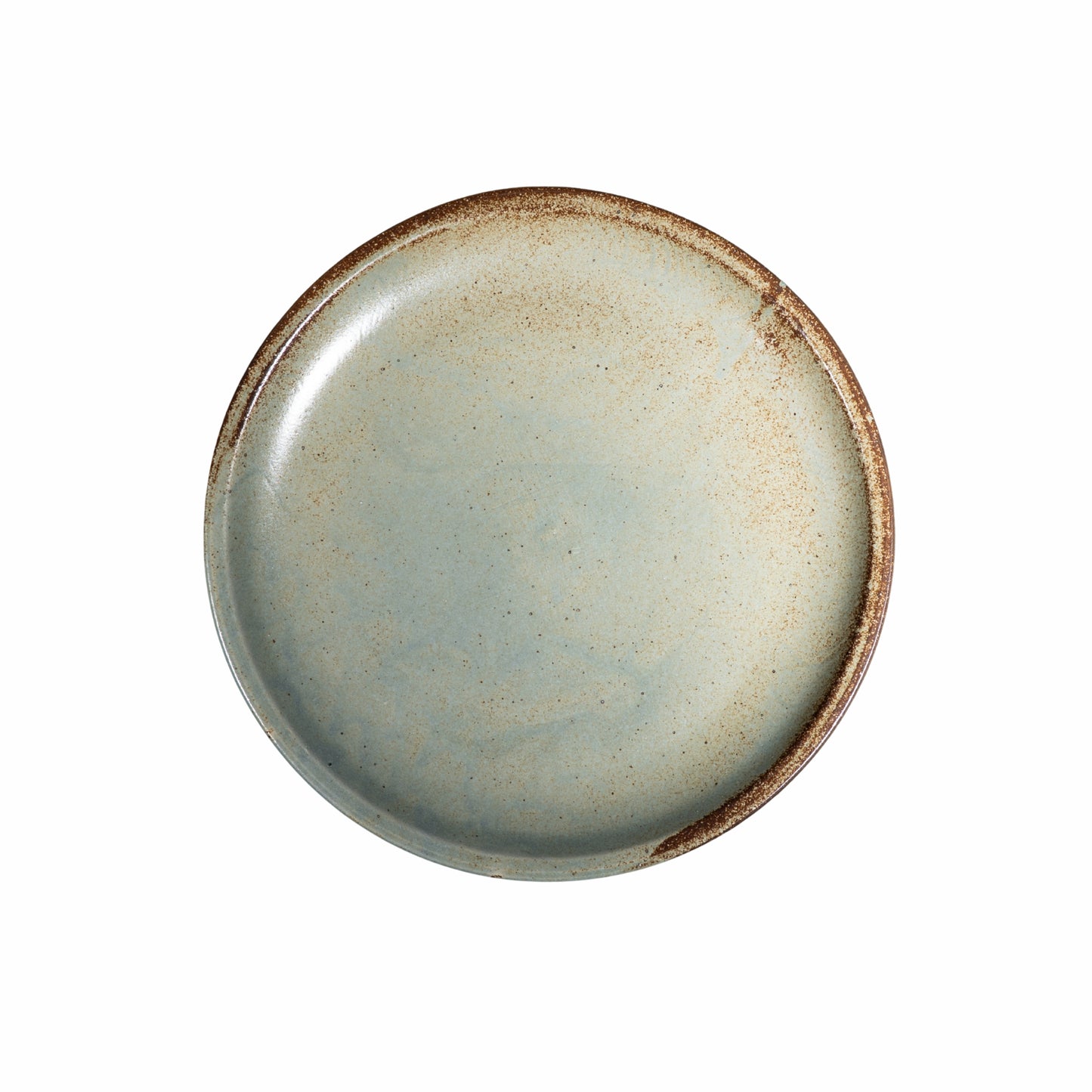
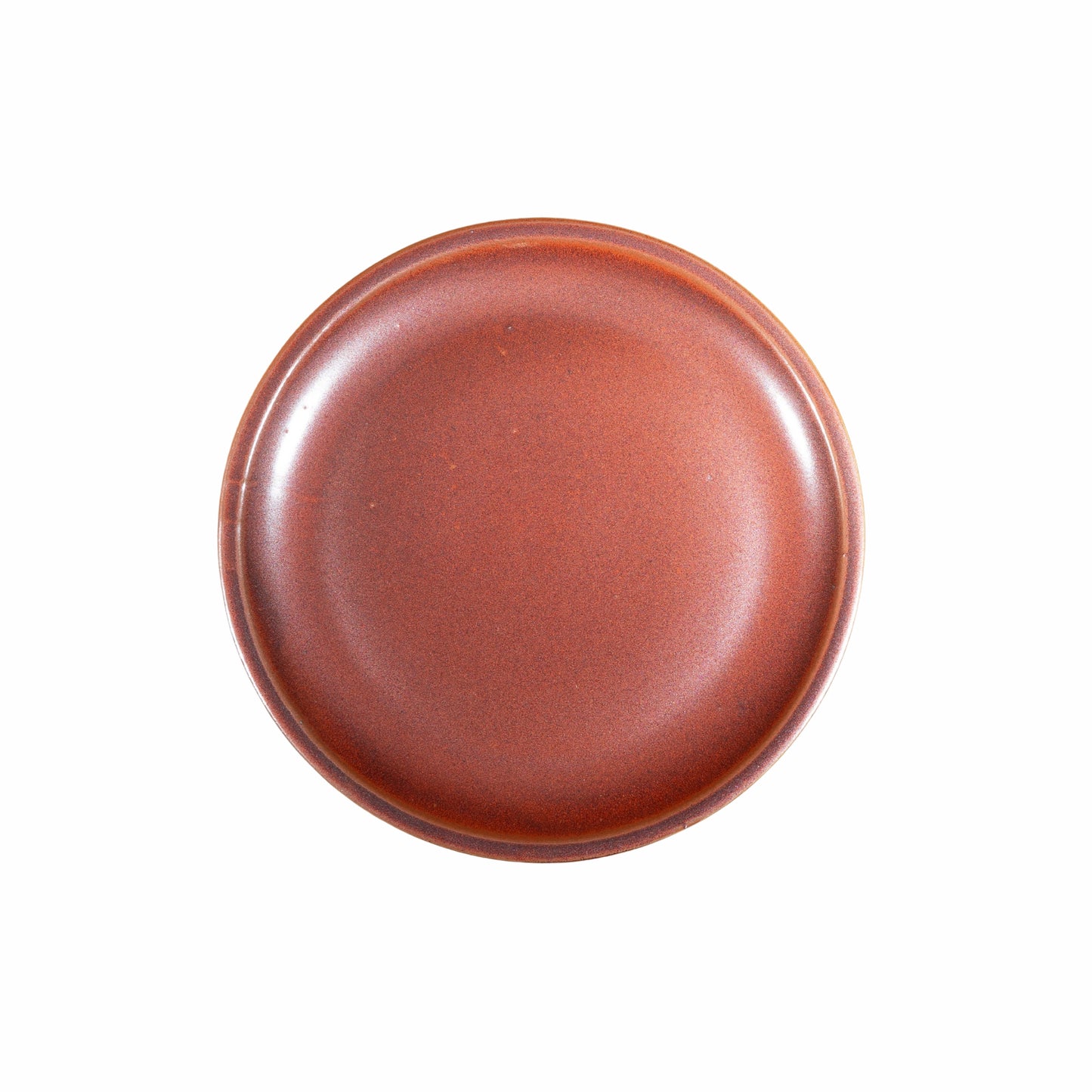
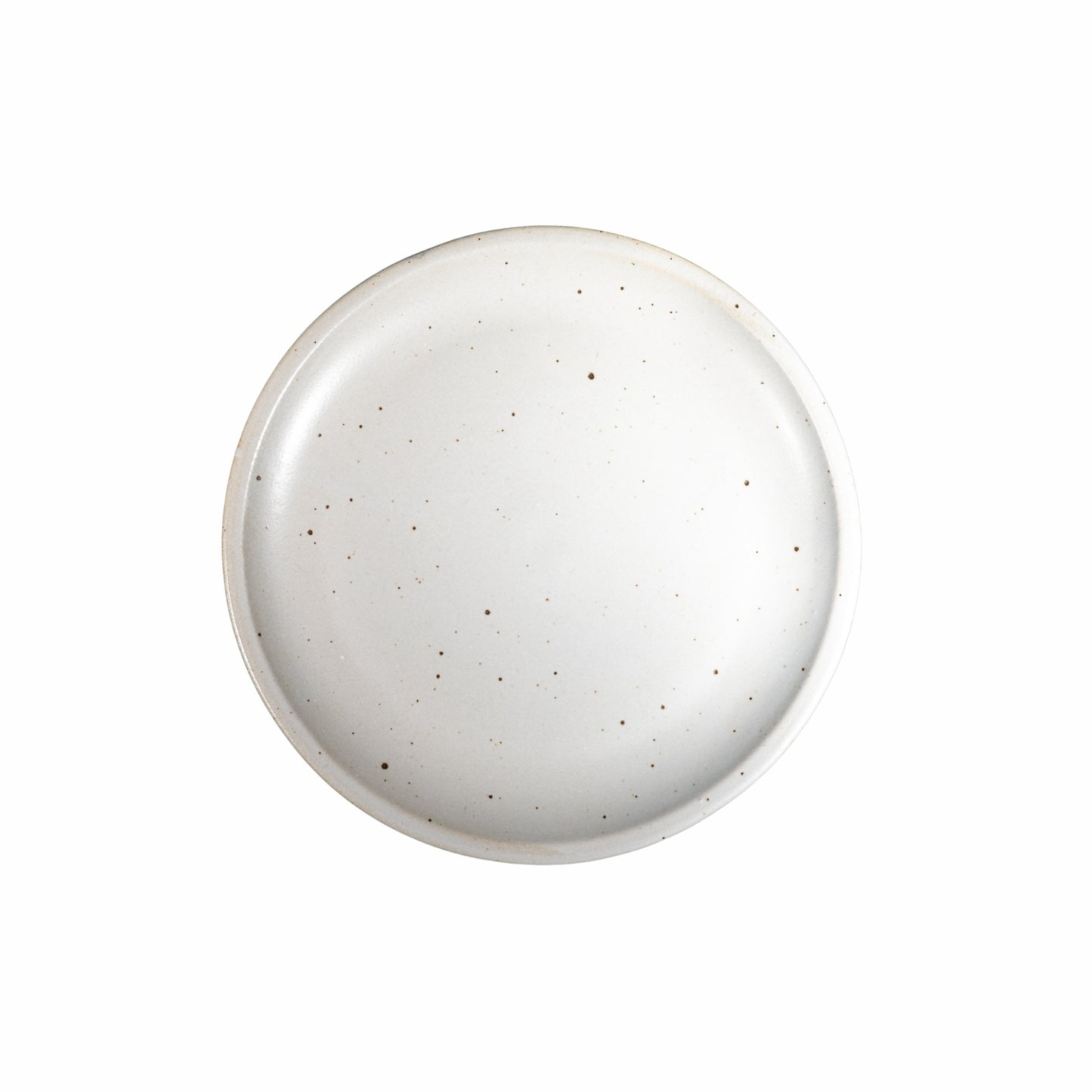
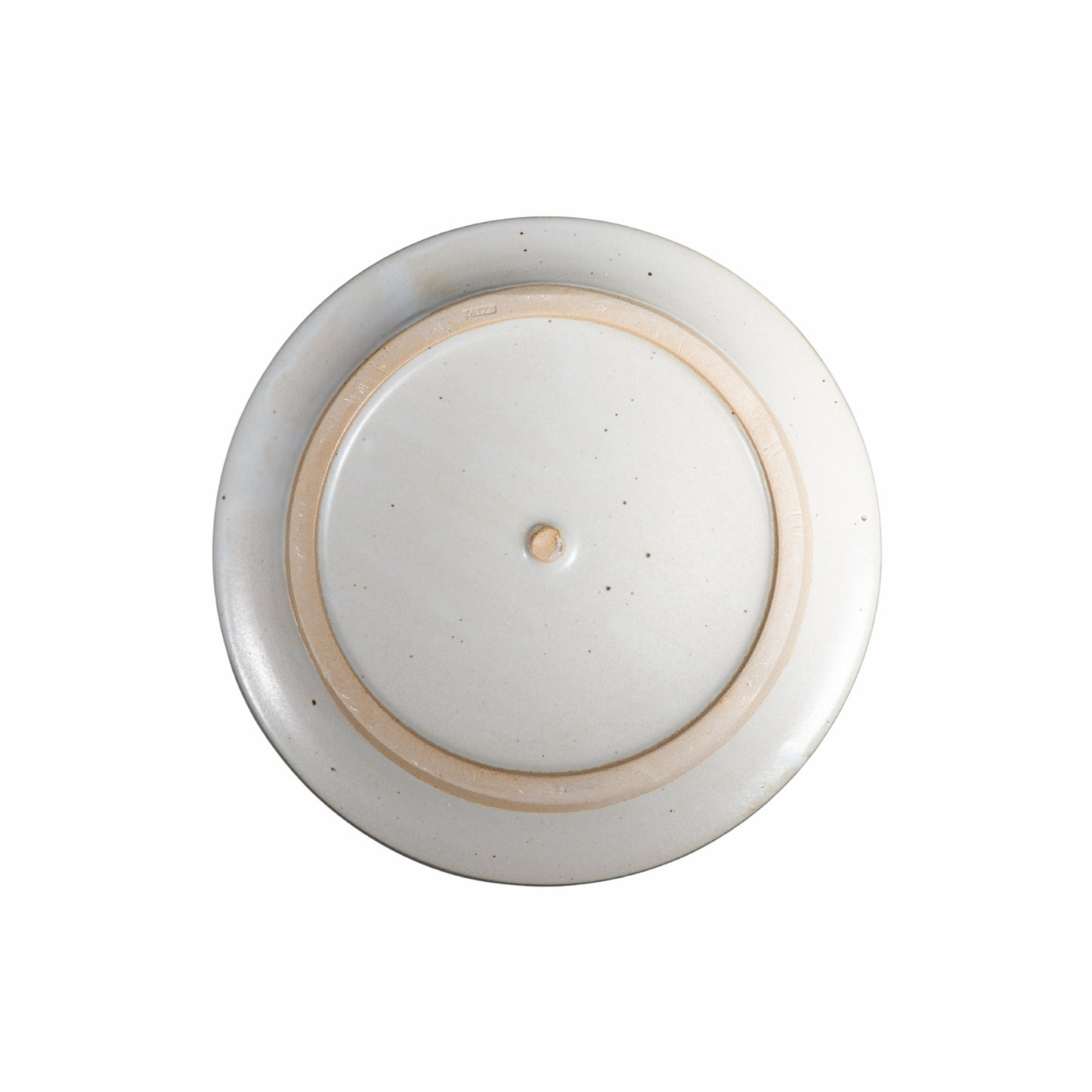
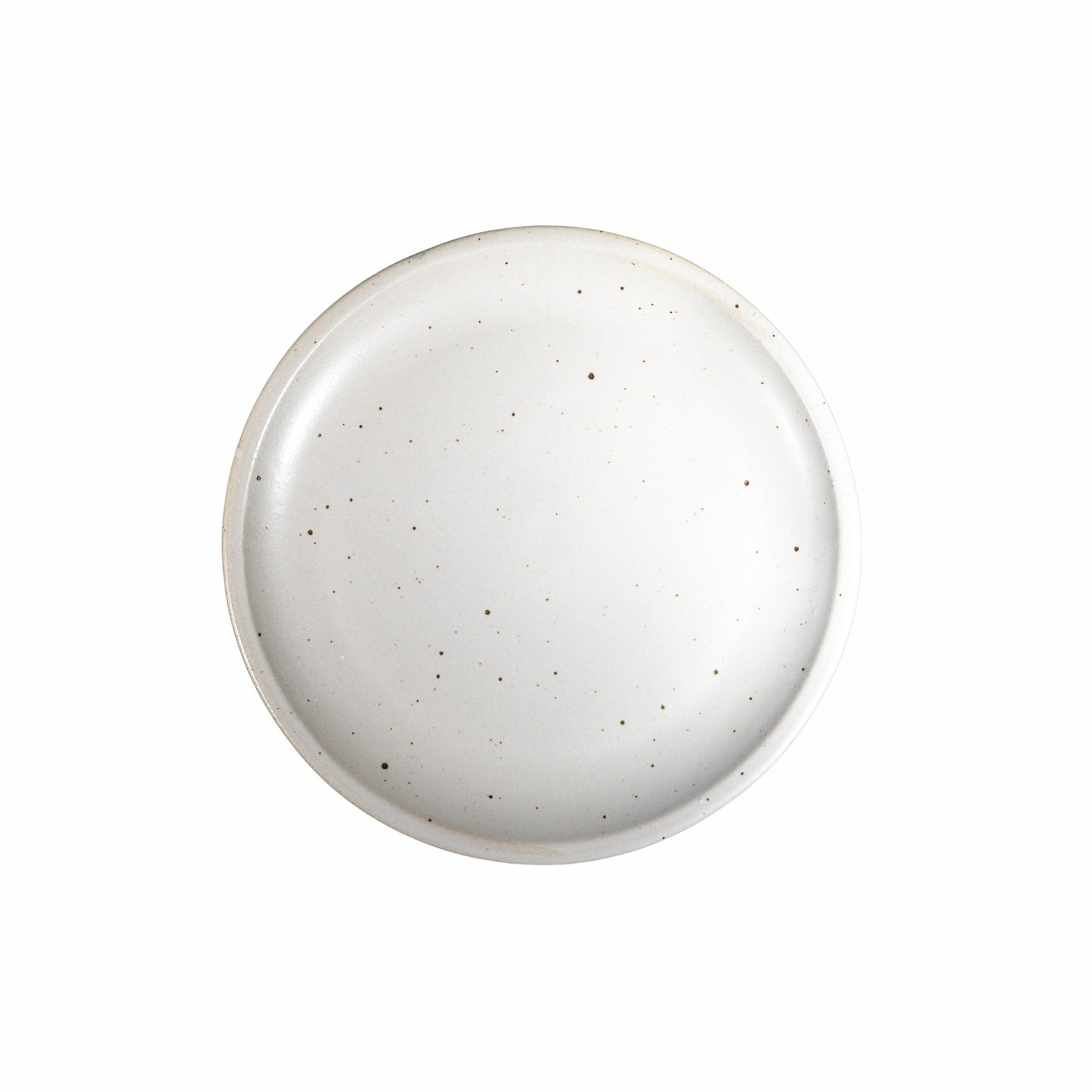
Learn more
The production process
In our workshop, every step is carefully executed by hand – from mixing the clay to the final glaze firing. The clay is produced, shaped, and dried in the monastery itself before being fired at over 1000°C. Each glaze is also mixed and applied on-site, and fired a second time at up to 1200°C. This creates stoneware ceramics that retain their beauty for a long time and possess a tangible depth.
Our glazes
Our glazes are made from natural minerals and are developed and produced directly at the monastery. They reflect the surroundings and tranquility of Taizé.
There are ten different glazes, each with its own color scheme, surface, and mood: Blue, Blue Mat, Silver Grey, Bresse Wood, Gousseau, Yellow, Noisette, Omnia, Red Kaki, and Temokku. No two pieces are exactly alike—and that's precisely what makes them so vibrant.
sustainability
We work exclusively with natural raw materials. Our ceramics are durable, timeless, and crafted to last for years. We also strive for environmentally friendly solutions in packaging and shipping. We believe that sustainability begins with the material and ends with conscious use.
History behind La Poterie de Taizé
La Poterie de Taizé is rooted in a special history: For decades, in the Taizé community, pottery was part of a simple, mindful life and a silent symbol of connection with nature. When the pandemic brought local life to a standstill, a new idea emerged: to bring Taizé ceramics to the world via Salzburg. Thus, in 2021, our brand was born, combining traditional craftsmanship with new approaches. Today, with every piece, we carry forward the values that have shaped us: sustainability, meaning, and authentic craftsmanship.
Our team
Behind every La Poterie de Taizé product are people with a shared conviction: that valuable things require time, dedication, and attention. Whether in the workshop in Taizé, the warehouse in Salzburg, or our store in Vienna: we work on a small scale for something big. And we do this as a small but cohesive team.
Get to know the team
Taizé Community
The Taizé Community is an international ecumenical brotherhood in southern Burgundy, founded in 1940 by Brother Roger as a place of peace, silence, and reconciliation. Today, brothers of different denominations live there together, united by prayer, simplicity, and service to others. Their spirituality is expressed not in words, but in lived trust—including in the quiet, artisanal work with clay.
Learn more about the community

